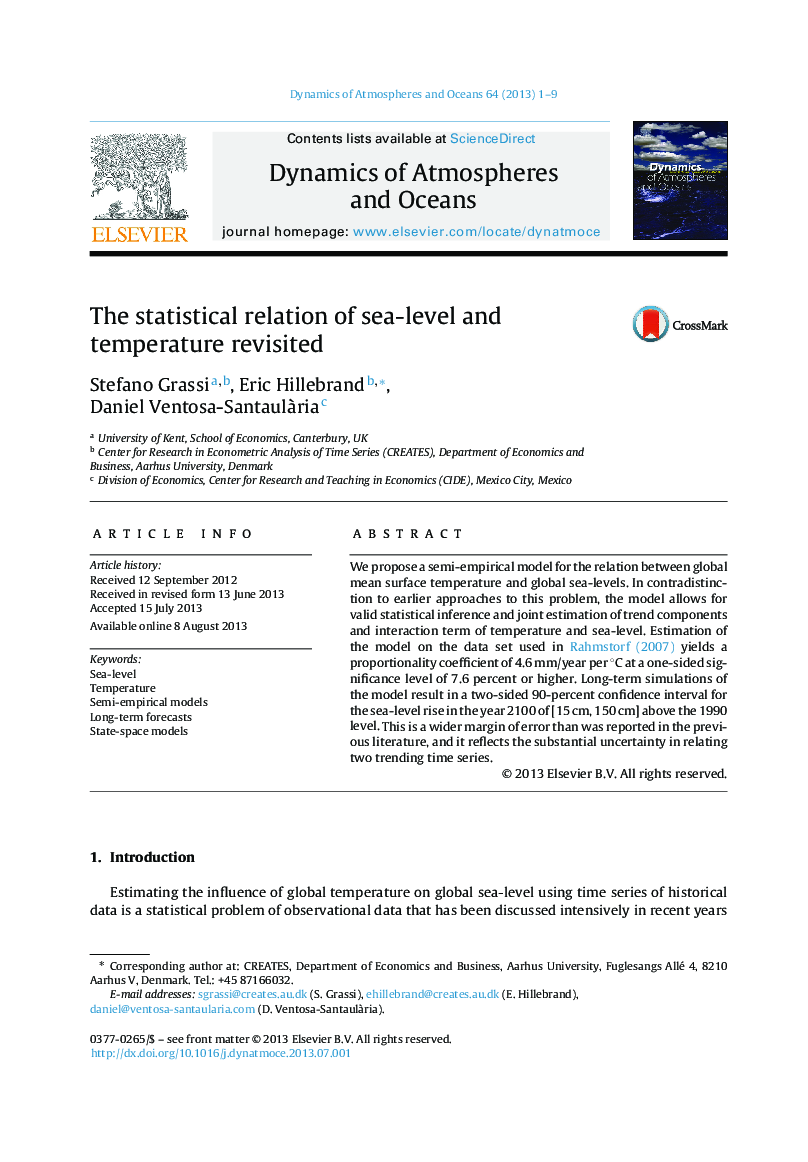| Article ID | Journal | Published Year | Pages | File Type |
|---|---|---|---|---|
| 4674039 | Dynamics of Atmospheres and Oceans | 2013 | 9 Pages |
•Proposes semi-empirical state-space model for relation of global temperature and global sea-levels that extracts smooth trend components similar to singular spectrum analysis.•Allows for joint estimation of trend components and interaction term as well as valid statistical inference on the interaction term.•Shows substantial influence of temperature increases on sea-levels in long-term projections, with wider confidence regions and more statistical uncertainty than previously reported.
We propose a semi-empirical model for the relation between global mean surface temperature and global sea-levels. In contradistinction to earlier approaches to this problem, the model allows for valid statistical inference and joint estimation of trend components and interaction term of temperature and sea-level. Estimation of the model on the data set used in Rahmstorf (2007) yields a proportionality coefficient of 4.6 mm/year per °C at a one-sided significance level of 7.6 percent or higher. Long-term simulations of the model result in a two-sided 90-percent confidence interval for the sea-level rise in the year 2100 of [15 cm, 150 cm] above the 1990 level. This is a wider margin of error than was reported in the previous literature, and it reflects the substantial uncertainty in relating two trending time series.
